Film Analysis (2)
1/52
Earn XP
Description and Tags
COMM 111 - Week 3
Name | Mastery | Learn | Test | Matching | Spaced |
|---|
No study sessions yet.
53 Terms
Why do we analyse film?
To better understand aesthetics and techniques
To understand the construction of cultural meaning and representation (textual analysis)
to be able to compare “cultures of sense-making” (textual analysis)
Textual Analysis
A way for researchers to gather information about how other human beings make sense of the world
A methodology for those researches who want to understand the ways in which members of various cultures and subculture make sense of who they are
An educated guess at some of the most likely interpretation that might be made of that text
Understanding how the text has been “put together” enables understanding of the meaning that it privileges
Text
something - anything that we make meaning from
A book, a TV programme, a film, a magazing, a song, an advertisement, a T-shirt, an ornament, a piece of furniture
Culture
The customary beliefs, social forms, and material traits of a racial, religious, or social group
The characteristic feature of everyday existence (such as diversions or a way of life) shared by people in a place or time
The set of shared attitudes, values, goals, and practices that characterizes an institution or organization
The set of values, conventions, or social practices associated with a particular field, activity, or societal characteristics
Three ways to approach this (text)
Realist
Meaning constructed by the text represents reality - any other views are wrong
ex. American Pie is a good, clean, fun movie that represents a rite of passage in a comic way
Structuralist
Underneath the surface, the meaning is similar to other representative examples
ex. American Pie is not different to other Hollywood films that adopt a man active/female passive binary
Post-structuralist
meaning constructed is not fixed, and is open to various readings
ex. American Pie promotes sexism, racism, homophobia, rape (depending on the cultural perspectives members of particular groups bring to it)
Semiotics - Denotation
What the audience sees and hears (i.e, the literal meaning of a signifier)
Semiotics - Connotation
Meaning developed by the community that does not represent the inherent qualities of the thing or concept originally signified as the meaning (i.e, an association beyond the literal meaning of a signifier)
Film Analysis - Systems
Narration
Mise-en-scène
Cinematography
Sound
Editing
Film Analysis - Devices
Story, plot, dialogue, perspective
Setting, props, lighting, costumes, staging
Long shot, close up, high angle, zoom, pan
Voices, soundtrack, sound effects
Cut, dissolving, long take
Narration
Literally the script
Mise-en-scène: Setting
Helps to set the film in a particular place and time
Can be historical, contemporary, futuristic
Studio set or on-location
Genre films often rely on a strong sense of setting
Can help to express characters’ psychology
Mise-en-scène: Props (set decoration)
Helps the impression of reality (or artifice)
Add meaning to a scene and characters
Have a function in ongoing action
Motivate (or distract) from narrative (MacGuffin or red herring)
Can embody character and identity
Chekov’s gun: “Remove everything that has no relevance to the story. If you say in the first act that there is a rifle hanging on the wall, in the second or third act it absolutely must go off. If it's not going to be fired, it shouldn't be hanging there. “
Basically only include ____ that are important to the plot and remove everything else
Mise-en-scène: Lighting
Directs attention to areas of the shot
Direction of _____(ex. top ____, under ____, back ____)
Quality of _____: hard/harsh (clear shadows and contrast) vs soft/diffused (no shadows and low contrast)
Source of ____: artificial vs natural (allows for different levels of control over the composition of the image)
Colour and shade: Warm, cold, white, coloured
Direction of Lighting - Underlighting
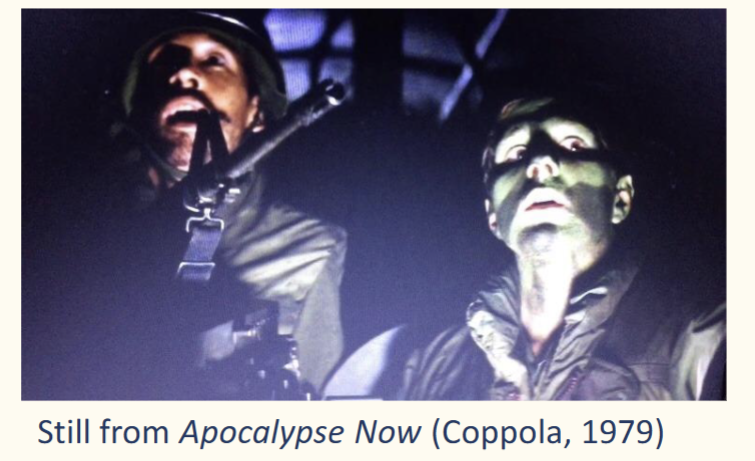
Direction of Lighting - Side lighting
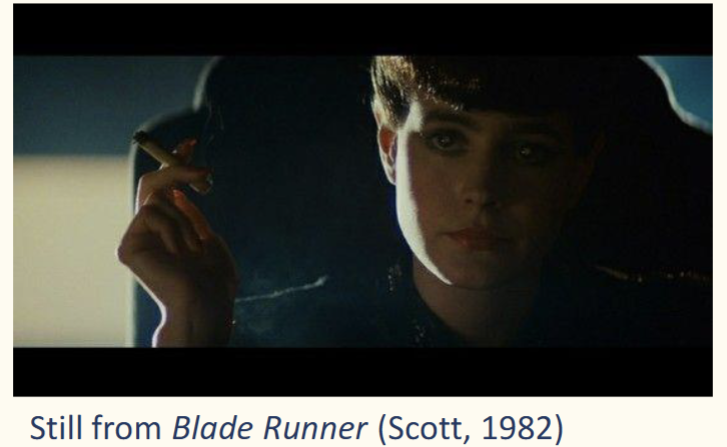
Direction of Lighting - Back lighting
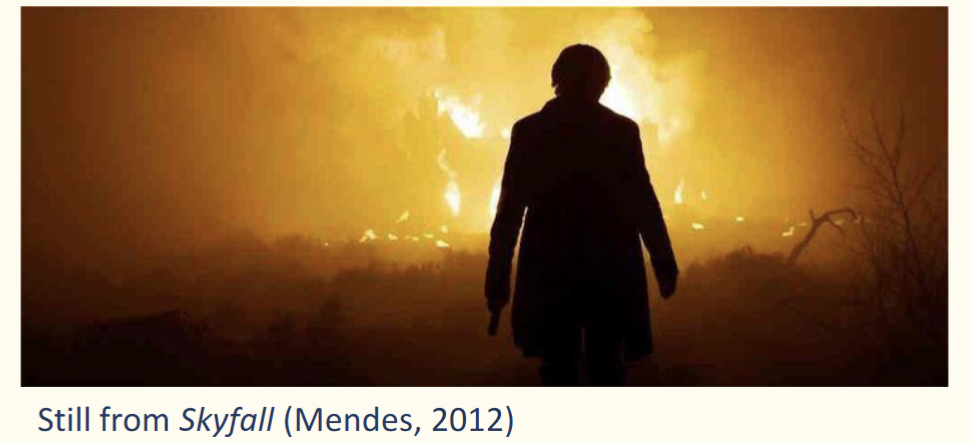
Quality of Lighting - Hard/Harsh lighting
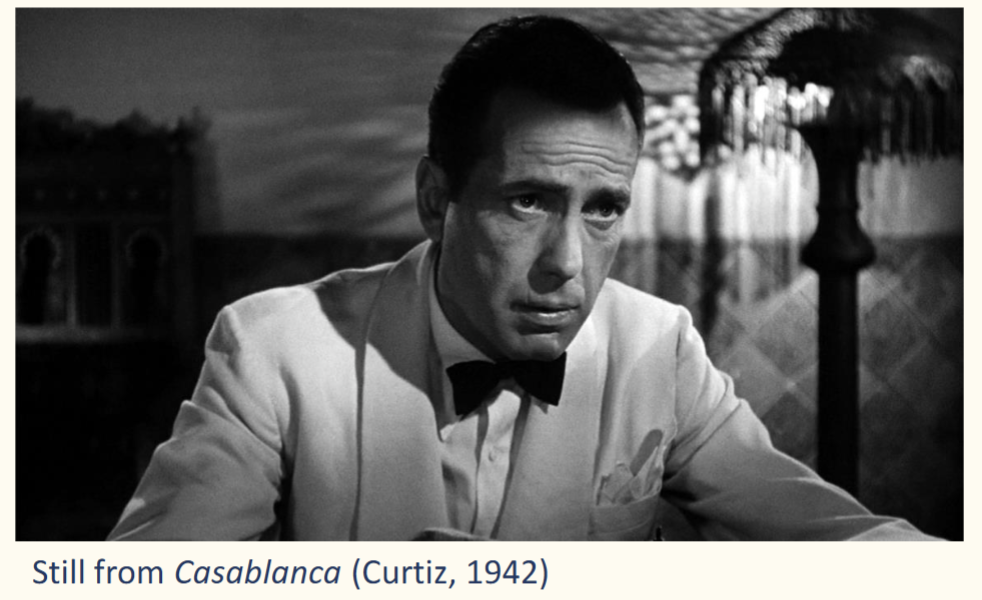
Quality of Lighting - Soft/Diffuse lighting
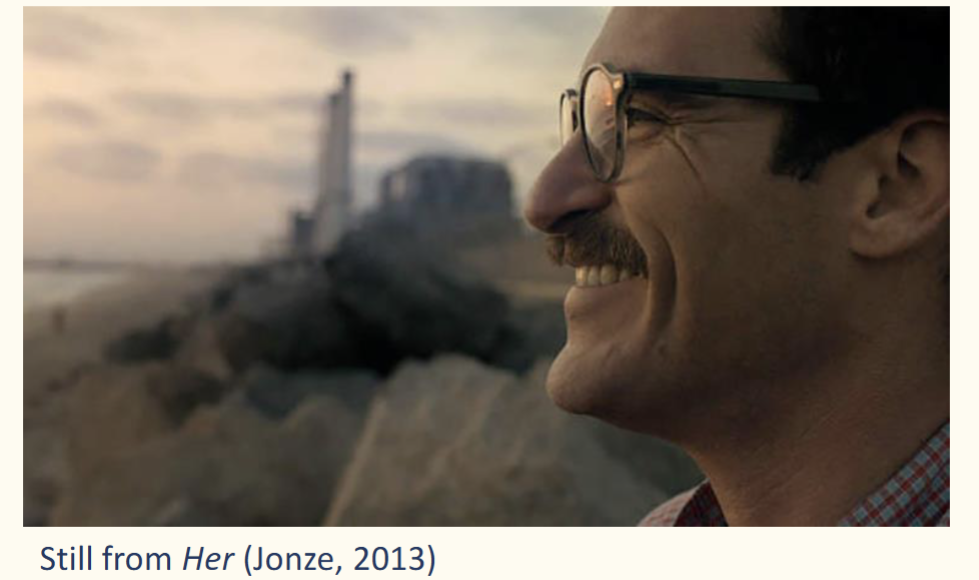
Source of lighting - Natural lighting
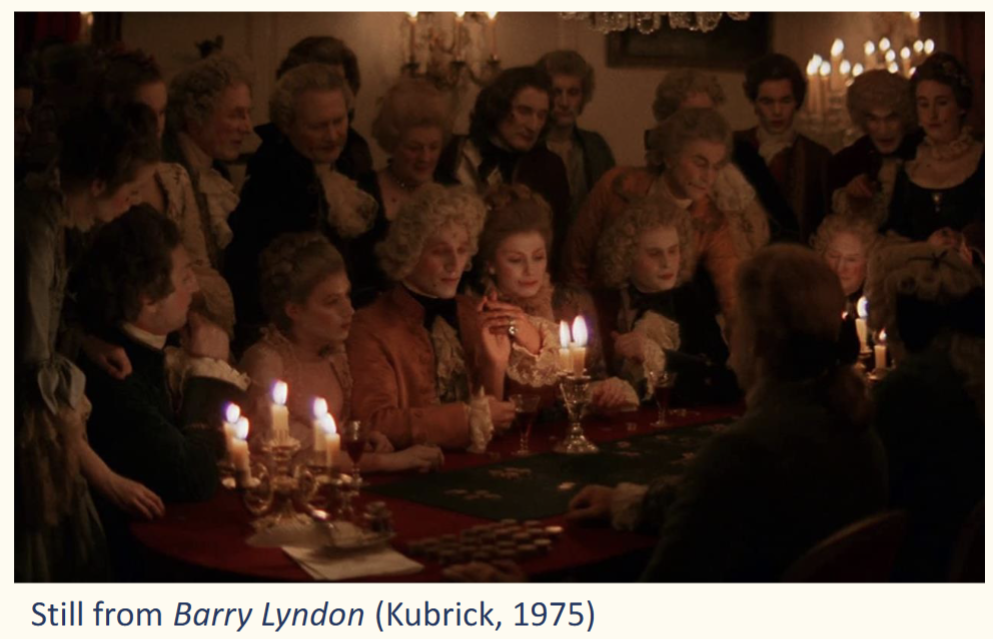
Source of lighting - Artificial lighting
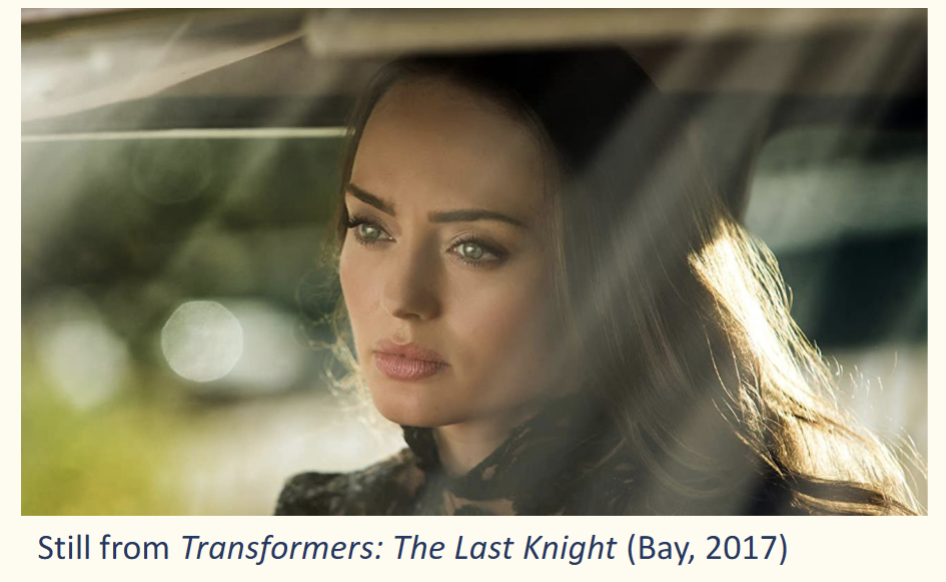
Mise-en-scène: Costumes and Makeup
Help to construct character identity and relations
Help to chart narrative development
Help to create authentic settings of time, genres, locations
Help to articulate a film’s overall themes
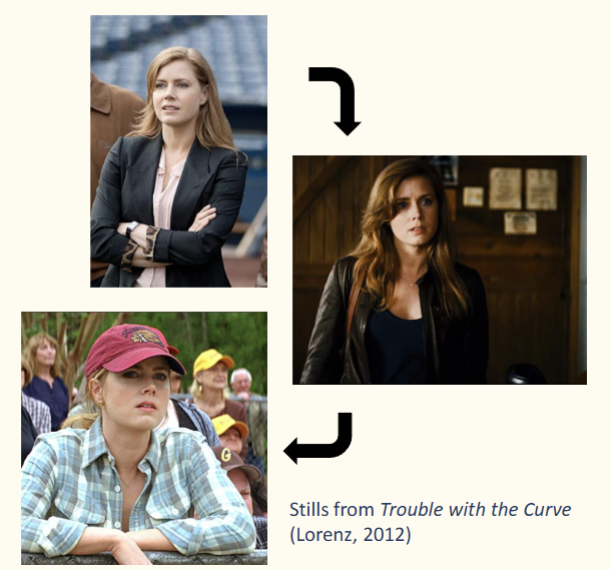
Mise-en-scène: Staging (figures and movement)
Figures can include anyone from Matt Damon, to R2D2, to Donald Duck
Can be realistic or non-naturalistic
Deliver entrances, exits, reactions, interactions, and movements
______ creates tone, atmosphere, visual detail, focus, and meaning in the frame
Rule of thirds
Golden Spiral
Symmetry
Leading Lines
Depth
Cinematography
Distance
Focus
Angle
Movement
Point of view
Cinematography: Shot Distance

Cinematography: Extreme Long Shot
Make your subject feel small against their location
Make your subject feel distant or unfamiliar
Make your subject feel overwhelmed by its location
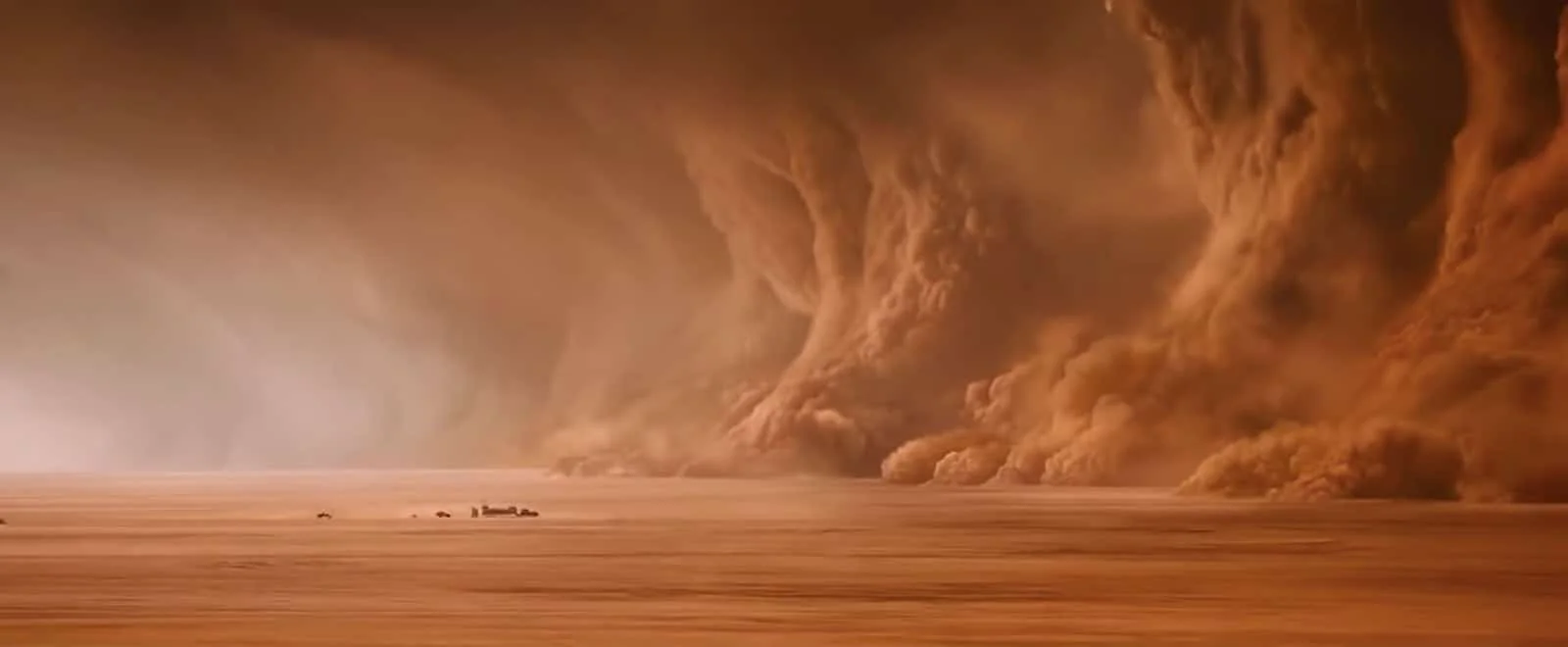
Cinematography: Long Shot
Gives us a better idea of the scene setting and how the character or subject fits into the area
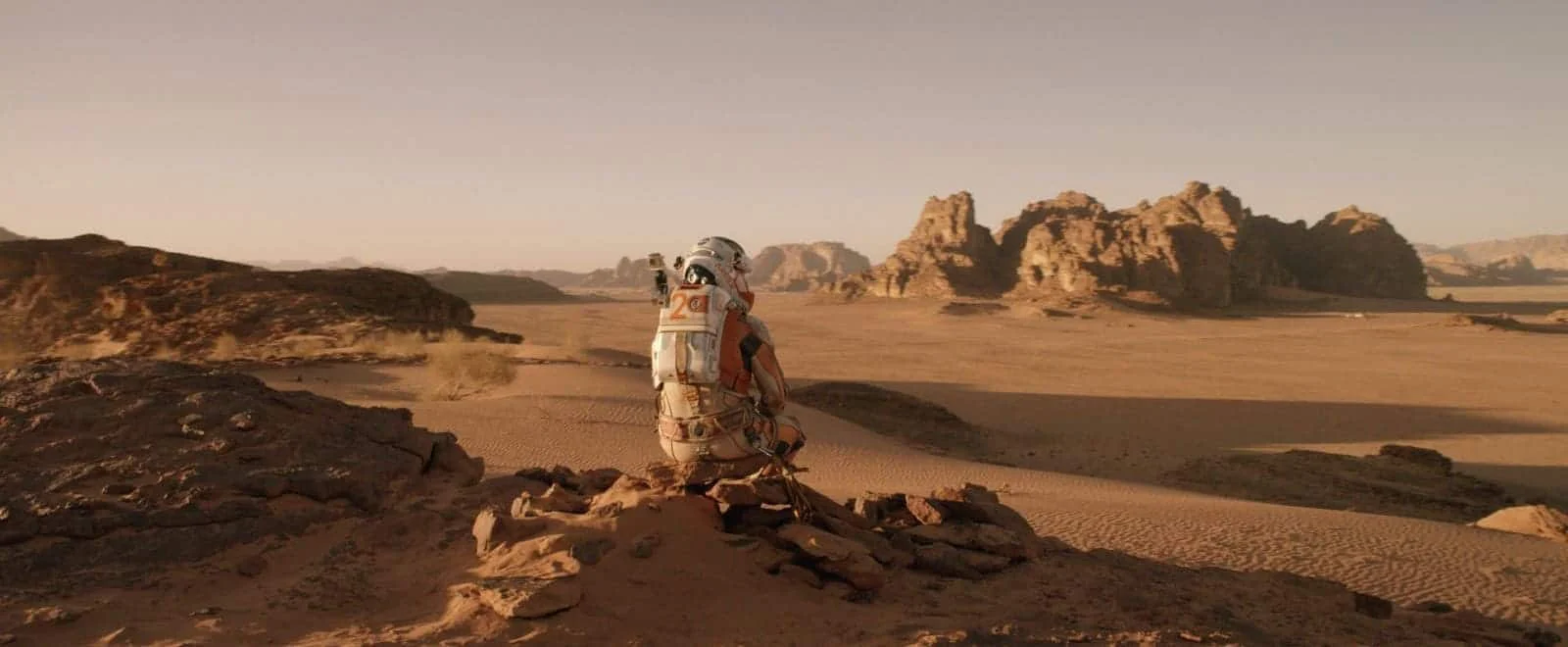
Cinematography: Medium Shot

Cinematography: Close Up
Useful when you want to reveal a character’s emotions and reactions

Cinematography: Extreme Close Up
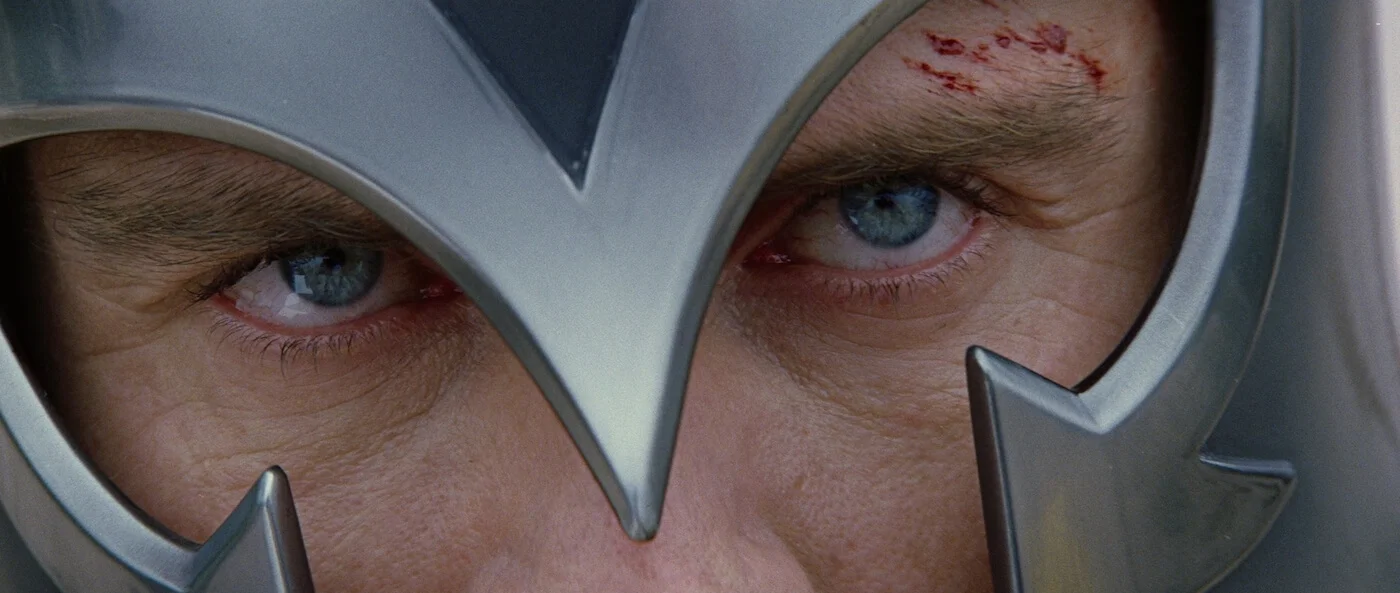
Cinematography: Deep Focus Shot
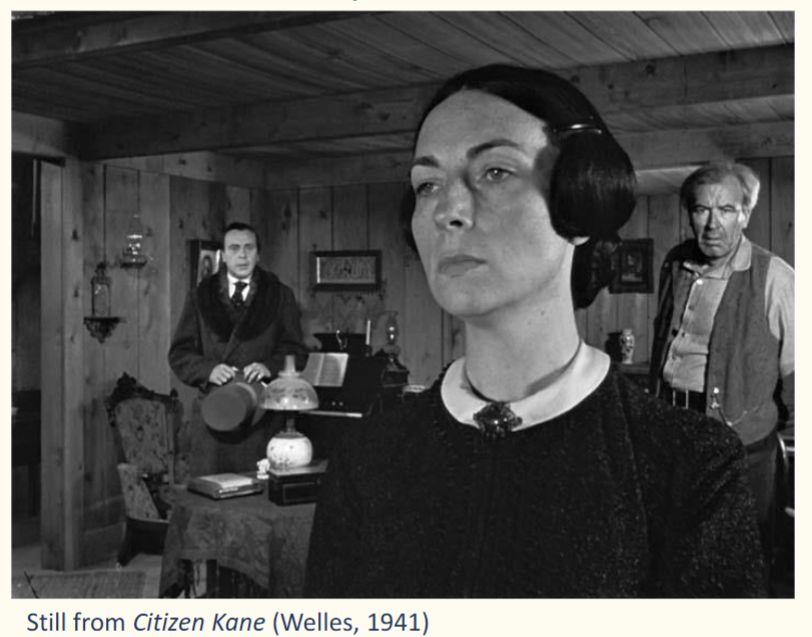
Cinematography: Shallow Focus Shot
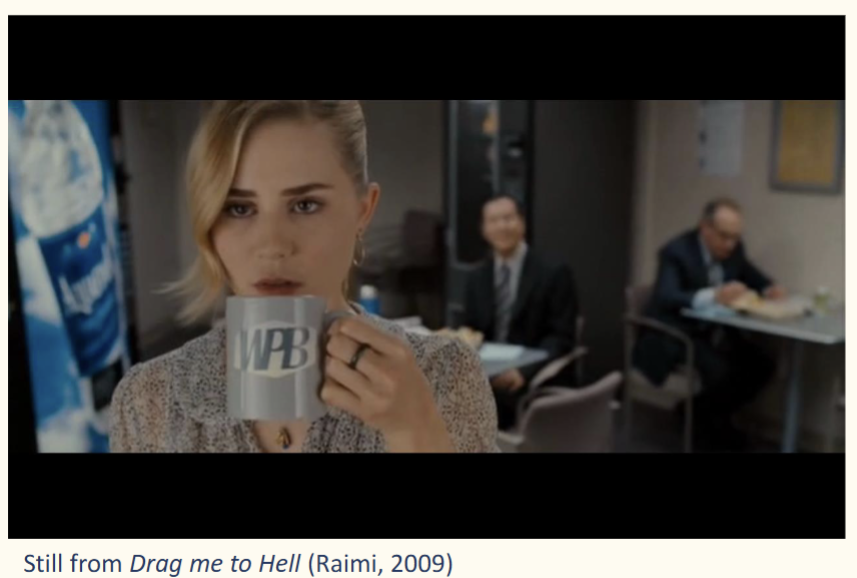
Cinematography: High Angle Shot
Usually creates a sense of inferiority
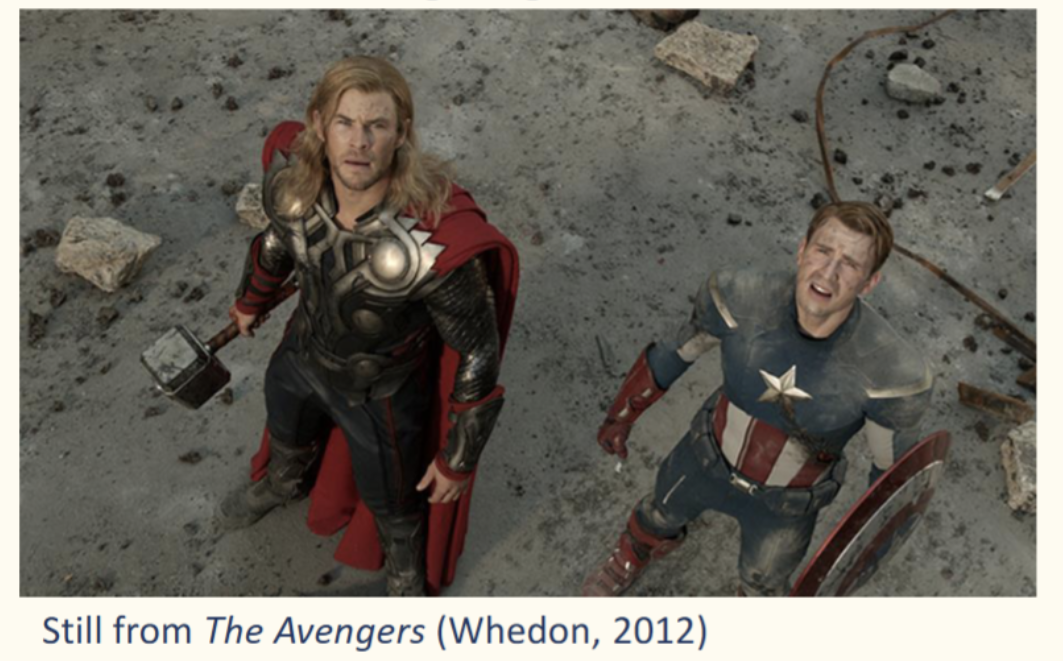
Cinematography: Eye-level shot
Subject is not inferior or superior, they are neutral - it mimics our natural perspective towards people in real life
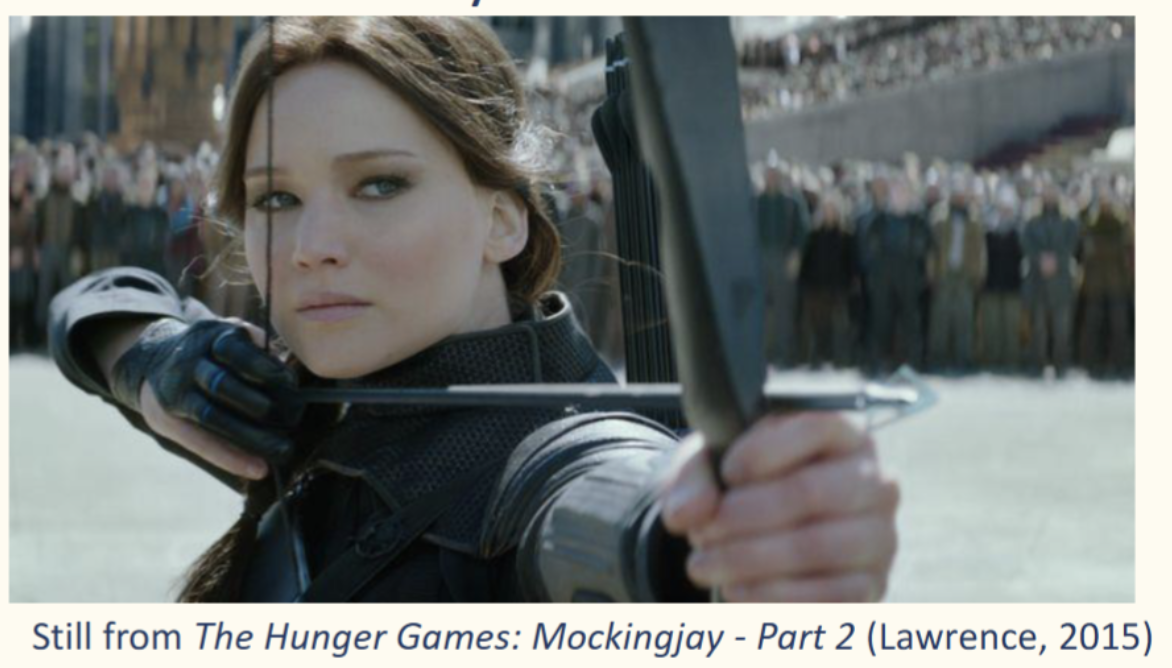
Cinematography: Low Angle Shot
Creates a sense of superiority around the subject as we are looking up at them and they are quite literally looking down at us
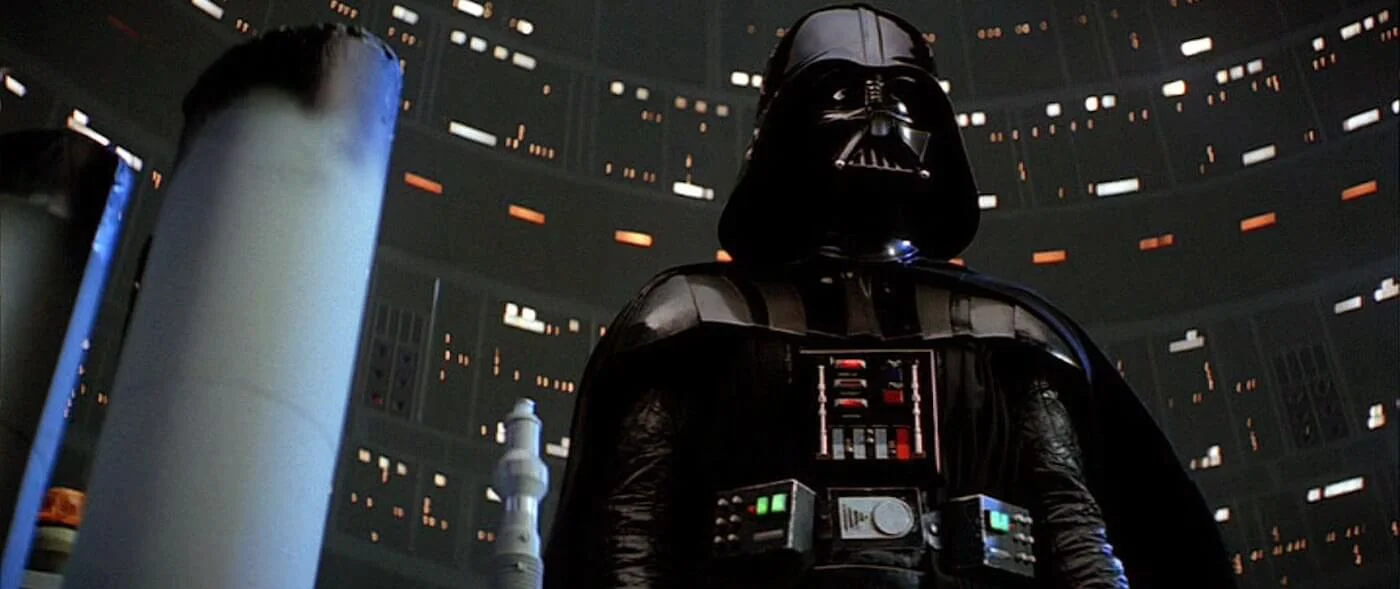
Cinematography: Tracking Shot
Any shot that physically moves the camera through the scene for an extended amount of time
Cinematography: Continuous Shot
Also called long take: a shot with a duration much longer than the conventional editing pace either of the film itself or of films in general
Organisation of signs in film
Signs “only receive significance by virtue of the relationships of difference they stand in with respect to other signs” (Bateman, O'Halloran, Schmidt, 2011, p.82)
Paradigmatic Organisation (signs in film)
Signs linked as alternatives to one another
Syntagmatic Organisation - signs in film
Signs linked together in structural configurations (ex. in a temporal sequence)
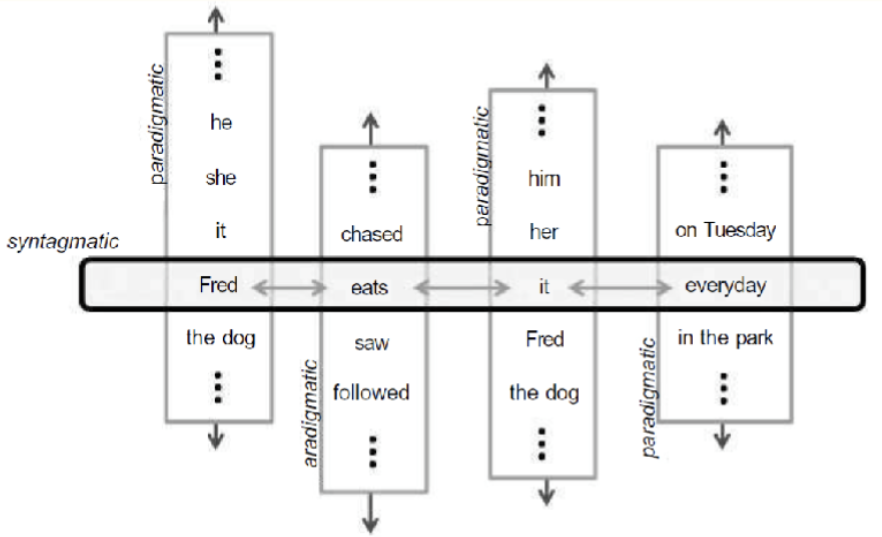
Sound in film
Voices, music, and sound effects
Establishes the tone, or atmosphere of a scene
Gives meaning to the actions, thoughts, and feelings of characters
Helps to establish the setting
Foreshadows future narrative events
Diegetic Sound
Any sound that the character or characters on screen can hear (voices, surrounding noises, etc.)
Non-diegetic sound
Any sound that the audience can hear but the characters on screen cannot (ex. the musical score, the voice-over narration)
Sound Bridge
Sound carrying over a visual transition
Sound Perspective
Ex. A Quiet Place (2018) where from the girl's sound perspective she couldn't hear anything since she is deaf and therefore couldn't sense the monster whereas from the sound perspective of the monster it could hear the crickets and surrounding environment
Non-diegetic film score example
Main theme and character themes (or leitmotif) (ex. Star Wars (1997) score by John Williams)
Character themes help characterize or give the audience an idea about the character
Film Editing
Also known as montage
Relationship between shots & process by which they are combined
Relationship between shots can be graphic, rhythmic, spatial, and/or temporal
Affects the film’s space, atmosphere, and narrative
Film Editing Conventions
Cut between close up, medium shot, and long shot when showing the same subject/object from shot to shot
Make sure the direction movement is consistent from shot to shot
Obey the 180-degree rule for shots
Film Editing: Graphic Relationship
Match cutting to relate two other wise disconnected scenes
“match on action” cut in Scott Pilgrim vs. the World (Wright, 2010)
Film Editing: Rhythmic Relationship
Assembling of shots and/or sequences according to a rhythmic pattern of some kind, usually dictated by music
ex. in Marie Antoinette (S. Coppola, 2006)
Film Editing: Spatial Relationship
Establishing shot to situate the audience within a particular environment or setting and/or to introduce an important character or characters
in Star Wars (Lucas, 1977)
Film Editing: Temporal Relationship
Parallel editing, a technique used to portray multiple lines of action, occurring in different places, simultaneously
ex. The Godfather (F. F. Coppola, 1972)
Film Editing
Instead of hard cuts, film makers can use dissolves, ripple dissolves, defocus, fade in/fade out
ex. a nice dissolve in Spaceballs (Brooks, 1987)